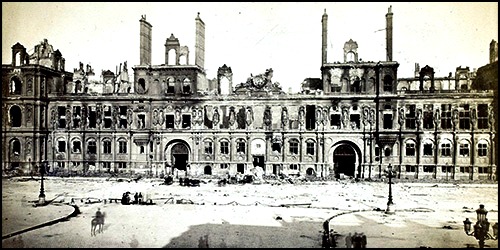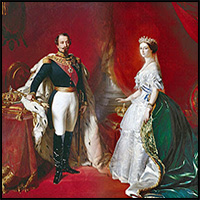

"I arrived at the Gare de Lyon at four in the morning. I looked for an omnibus that would take me to the center of the city . . . I got on with my bundle and my box of colors and at a trot I entered the capital of the world."
"When I arrived in front of the Louvre, I saw smoke and heard shots . . . I continued my walk until I reached the Chamber of Deputies, also guarded by troops with bayonets fixed. A bit farther on the Palace of the Legion of Honorwas still smoking…it gripped my soul to see so much devastation..."

In early June 1871, Tommaso Juglaris left Italy behind to pursue fresh prospects as an artist in Paris. Over the course of the nineteenth century, the French capital had gained a reputation as Europe’s most cosmopolitan city and its greatest center for art and art education. It was the destination for artists of every imaginable nationality. Juglaris's arrival, however, was singularly ill-timed: he entered a beleaguered city, beset with despair and reeling from appalling turmoil and loss of life.


Over the previous eleven months a war with Prussia had brought France inglorious defeat on the battlefield. The Emperor Napoleon III and his consort Empress Eugenie, who had cultivated Paris’s cultural preeminence for two shining decades, were deposed and forced into exile, leaving a new republican government ostensibly in charge. Yet peace did not immediately come. Radical political elements assumed control of the city’s arrondissements, or districts, establishing a worker-led revolutionary government called the "Paris Commune." Sixty-one days later, on May 21, 1871, the French government mobilized in reaction. In what is remembered as "La semaine sanglente" or “The Bloody Week,” thirty thousand government troops entered the barricaded city to crush the Paris Commune. Amid pitched street battles, the “Communards” were routed, often massacred: an estimated twenty thousand men, women, and children were executed on the spot; another thirty-eight thousand arrested. The Tuileries Palace, the Hotel de Ville (City Hall) and the Palace of the Legion of Honor—all emblems of France’s royal or imperial heritage--were set afire. Their ruins were still stood smoldering as Juglaris walked Paris streets in search of his own future.